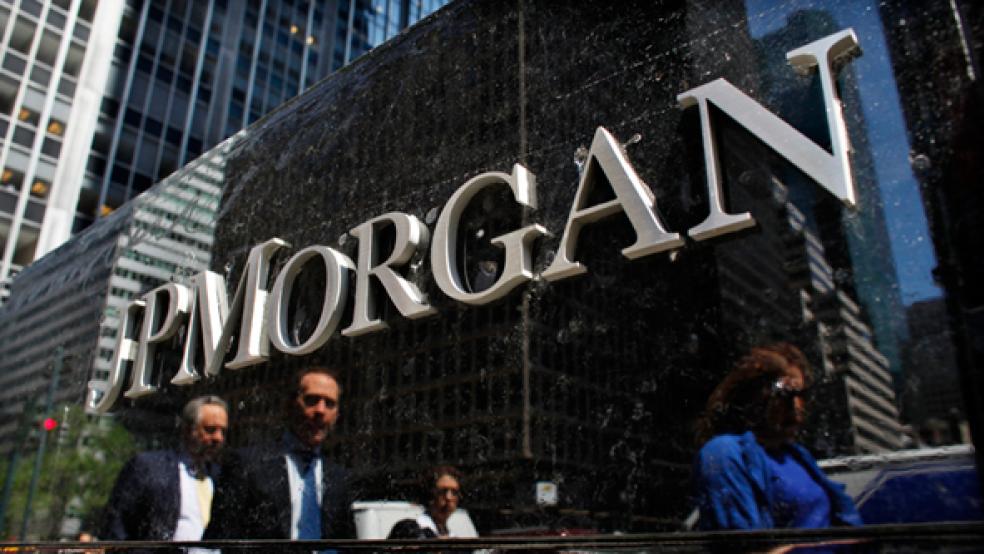The market’s focus has, understandably, been on the Federal Reserve and just when it will begin to pull back on its bond-buying program. Every bit of economic news is filtered through that prism. The June jobs report released Friday, for example, was deemed healthy enough to support to the growing conviction that the Fed “tapering” will begin this fall.
RELATED: FOUR WAYS THE FED IS CREATING HARMFUL UNCERTAINTY
Yet, as we all turn into Fed Heads trying to become one with Ben Bernanke’s latest jam, one factor that will have just as much impact as the Fed in shaping short-term stock market returns could be drowned out: a new round of corporate earnings announcements.

Yes, over the long haul, interest rates help shape earnings, and investors may find their views of stocks as an asset class determined in part by yields on bonds, which rank above stocks in the capital structure. But as is the case every quarter, unexpectedly good or bad results have the potential to reshape the market’s views of a particular company, an industry or even the asset class as a whole. So, with Alcoa set to kick off (officially) the second-quarter earnings season after Monday’s closing bell, it’s worth pausing in the fuss over the Fed’s intentions to take a quick look at some of the companies that might grab headlines with their results in the coming weeks.
TODAY
ALCOA (NYSE: AA): The aluminum giant is the first Dow Jones Industrial Average component to report its earnings every quarter and so, over time, has earned the status of official ribbon-cutter. Do its earnings give us much insight into what lies ahead? They shouldn’t, really: The materials sector no longer dominates the market or the business world, and Alcoa isn’t the bellwether it once was.
Nonetheless, as Factset points out, when Alcoa has posted results that are better than analysts had forecast, 80 percent of the time the S&P 500 index increases over the three months that follow. (When Alcoa misses, the track record shows that the S&P has gained only about half the time.) Coincidence? Correlation? Given the market’s mania for patterns (some people remain convinced there is a link between hemline levels or which team wins the Super Bowl and the stock market’s performance…), it may not matter: This may end up becoming a self-fulfilling prophecy.
Greg Harrison, an analyst at Thomson Reuters, says that analysts currently predict the company will report earnings of 6 cents a share, reflecting almost no growth over last year’s levels. Against the context of a weak industry, however, that isn’t too shabby: Harrison calculates that companies in the materials sector will see a 7.2 percent decline in earnings, making it the weakest group within the S&P 500.
“People will be watching to see what they have to say about construction activity, since the earnings at steel companies are expected to be down 81 percent,” Harrison adds. “Any clues they can give on this will be of great interest to people tracking real estate and heavy industry in general.”
THURSDAY, JULY 11
YUM! BRANDS (NYSE: YUM): Almost half of the company’s revenue comes from China, where, in the good old days, the growing demand for fried chicken and other foods fueled the company’s growth. Then came reports early this year that Yum was selling poor-quality poultry provided by its suppliers, triggering negative publicity and a 20 percent drop in same-store sales in China in the first quarter.
Even as the company has struggled to recover from that public relations nightmare, a new bout of bird flu has damaged the second-quarter outlook, and the company is warning that this will be the weakest quarter of the year. The question is what kind of forward outlook will accompany the announcement of the results. Yum is still trading at 22.3 times trailing earnings, a premium to the overall market. Given that the company is still expanding in China, analysts will be parsing the comments made during the conference call for any hint that an improvement in sales and profits in the second half, and especially in the fourth quarter, may not kick in as anticipated. The consensus for second-quarter results is 54 cents a share, down from 67 cents in last year’s second quarter.
FRIDAY, JULY 12
JPMORGAN CHASE (NYSE: JPM); WELLS FARGO (NYSE: WFC): Here is where we’ll get our first glimpse into the impact of rising bond yields on everything from mortgage refinancing to fixed income underwriting. The majority of the banks report their results next week, and both Factset and Thomson Reuters agree that the sector will be one of the second quarter highlights. (The former predicts it will have the highest earnings growth rate, of 16.8 percent; Thomson Reuters says the Telecommunications sector will come out on top, but that the Financials follow close behind with growth of 17.5 percent.)
Much of the growth comes from the consumer finance and investment banking/brokerage businesses, which Thomson Reuters predicts will see gains of 55 percent and 45 percent, respectively. Interestingly, the estimates for JPMorgan’s revenues have declined since last autumn, even as analysts have boosted their outlook for the company’s profitability. That may make whatever the bank has to say about cutting expenses and becoming a leaner organization more significant; in the wake of last spring’s London Whale trading losses, it is going to be more difficult for the bank to take the kind of risks that it may have to in order to generate hefty profits.
What remains unclear is the impact that rising interest rates will have on the bank’s portfolio of fixed-income securities. Will the growth in the economy – and lending activity and short-term interest rates, on which banks generate more revenue – be enough to offset that negative impact from higher rates? The answers will go a long way to determining profits in the second half of the year.
These are just a handful of the hundreds of companies scheduled to release their second-quarter earnings between now and mid-August, with retailers announcing their own profits later in the cycle, in the final weeks of August. Right now, the forecast is for S&P 500 companies to report earnings higher than they were a year ago – but a gain of 2.9 percent, which is modest.
Moreover, of the 22 S&P 500 companies that have reported their results so far, fewer than half posted better-than-expected revenues, well below the long-term average. That may signal that even if the economy is improving, companies that want to demonstrate growth in profitability will have to pay strict attention to their cost structure. Something to ponder when you’re studying the blizzard of earnings announcements in the coming weeks.






